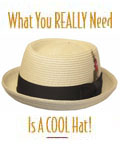
 |
 |
 |
 |
 |

|
On occasion, I get emails asking how the big bands came about and what caused them to fade from prominence. This is a difficult question to answer but for those of you poor students who've got a report to write in the next couple of hours, I'm posting this really, really brief explanation of the rise and fall of the big bands.
Jazz music sprung out of Dixieland music which sprung out of Ragtime which likely originated in New Orleans. These club musicians eventually migrated to Chicago and New York. As this style gained popularity, bandleaders like Paul Whiteman and Vincent Lopez (around 1916) took elements of jazz and combined it with the "sweet sounds" they observed people liked to dance to. They also began upping the ante by increasing the size of their outfits (BIG-bands) until they were considered orchestras. In the 20's, a new medium called radio brought these bands a broader audience than strictly performing on the road could possibly do.
Swing music had been brewing for awhile in the clubs but it was Benny Goodman's Palomar Ballroom appearance in 1935 that made swing music burst into wide acceptance, especially with the kids. The most popular big bands played a combination of swing (to show off their ability) and ballads (in order to sell records and get radio airplay). The most popular bandleaders were Benny Goodman, Artie Shaw (another clarinetist), Tommy Dorsey (with singer Sinatra), older brother Jimmy Dorsey, former Goodman sideman Harry James and likely the most enduring and famous of them all, Glenn Miller. If you're new to the music of the big bands, it's likely Glenn Miller is the one you've already heard. Some bandleaders like Sammy Kaye and Guy Lombardo made a good living playing strictly "sweet" music and stayed away from swing for the most part.
As World War II came about, the big bands reached their apex in popularity. It was unpleasant times and the mood of the country turned to sentimental sounds. As popular as these bands were on radio and records, there began to be a severe shortage of able musicians as most males were being drawn into the armed forces. Only the most established leaders could afford to hire the remaining top players. In 1942, James Petrillo, the leader of the American Federation of Musicians, ordered a ban on musician's recording new material which lasted until 1944. Singers with choral arrangements were not affected by the ban, which further outdistanced them from the big bands they were once a part of. With the end of the war came the big band's decline. Returning soldiers (musicians) had little interest in hitting the road again as traveling musicians. And of course, the final blow for these huge performing acts was the advent of television. There was little need to leave the house for an evening of entertainment. For those who did venture out into the smaller night clubs, they were more likely to find a more compact and economical jazz quartet or witness the emergence of bebop.
| THE REVIEWS |
| Andrews Sisters - Latin Quarter 1957 |
| Desi Arnaz - w/Diosa Costello 1948 |
| Count Basie - Lincoln 1943 |
| Tony Bennett - Copacabana 1958 |
| Milton Berle - Latin Quarter 1948 |
| Joey Bishop - w/Andy Williams 1959 |
| Ray Bolger - Wizard of Oz Scarecrow, Empire Room 1956 |
| Cab Calloway - Greenwich Inn 1949 |
| Diahann Carroll - Persian Room 1961 |
| Betty Clooney - Waldorf Astoria 1954 |
| Nat King Cole - Copacabana 1958 |
| Perry Como - Versailles 1944 |
| Copacabana - famous night club restaurant is reviewed 1953 |
| Crosby Brothers - Latin Quarter 1961 |
| Xavier Cugat - Waldorf Astoria 1951 |
| Vic Damone - Riviera 1953 |
| Billy Daniels - Copacabana 1952 |
| Sammy Davis Jr. - Copacabana 1959 |
| Phyllis Diller - w/Bobby Short 1958 |
| Nancy Donovan - Copacabana 1952 |
| Jimmy Durante - Copacabana 1951 |
| Billy Eckstine - Copacabana 1951 |
| Duke Ellington - Basin St. East 1961 |
| Eddie Fisher - Empire Room 1959 |
| Judy Garland -Town & Country 1958 |
| Jackie Gleason - La Vie en Rose 1953 |
| Benny Goodman - Empire Room 1956 |
| Dolores Gray - Waldorf Astoria 1954 |
| Buddy Hackett - Copacabana 1956 |
| Connie Haines - Terrace Room 1951 |
| Dick Haymes - Versailles 1956 |
| Horace Heidt - 30th Anniversary 1954 |
| Florence Henderson w/Bill Hayes 1958 |
| Hildegarde - Pierre 1953 |
| Celeste Holm - Plaza 1958 |
| Eddy Howard - Roosevelt 1955 |
| Burl Ives w/Wally Cox - Persian Room |
| Lisa Kirk - Persion Room 1958 |
| Frankie Laine - Latin Quarter 1955 |
| Julius La Rosa - Romanian 1958 |
| Peggy Lee - Copacabana 1958 |
| Jerry Lewis - Town & Country 1957 |
| Joe E. Lewis - Copacabana 1945 |
| Ted Lewis - Latin Quarter 1953 |
| Liberace - Persian Room 1947 |
| Guy Lombardo - Roosevelt 1957 |
| Vincent Lopez - Grill Room 1954 |
| Tony Martin - Riviera 1953 |
| Martin and Lewis - Copacabana 1950 |
| Ray McKinley - Glenn Miller Band 1957 |
| Mills Brothers - Latin Quarter 1956 |
| Vaughn Monroe - Astor 1955 |
| Constance Moore - St. Regis 1958 |
| Johnnie Ray - Copacabana 1953 |
| Rowan & Martin - Latin Quarter 1961 |
| Della Reese - Copacabana 1961 |
| Sugar Ray Robinson - French Casino |
| Dorothy Shay - St. Regis 1961 |
| Frank Sinatra - Wedgewood 1943 |
| Danny Thomas - Copacabana 1949 |
| Sophie Tucker - Latin Quarter 1950 |
| Mae West - Latin Quarter 1956 |
| Julie Wilson - Persian Room 1954 |
| EDITORIALS |
| Dean Martin - thoughts on Mr. Sauve |
| Peter Lawford - retrospective |
| Rise & Fall of the big bands |
| INTERVIEWS |
| K Baggelaar- Copacabana author |
| Don Dellair - cabaret performer |
| Denny Farrell - big band disc jockey |
| Hal Turner - Performer/Conductor |
| B Zickafoose - played in WWII Europe |
| ASSORTED |
| Bernie Bierman bio |
| Sammy Kaye - Roosevelt 1957 |
| Dinah Shore - press release and autograph from the 50's |
| A Letter about a WWII song |
| Harbers & Dale - Dance Team |
| ::: |
| Links |
| Message Board |
| Guestbook |
| Search Site |
| My Pets |

